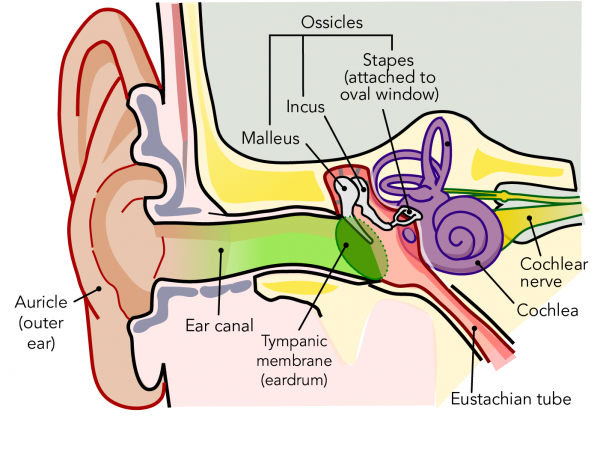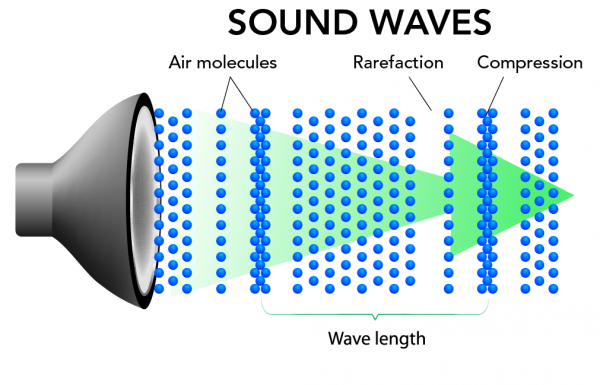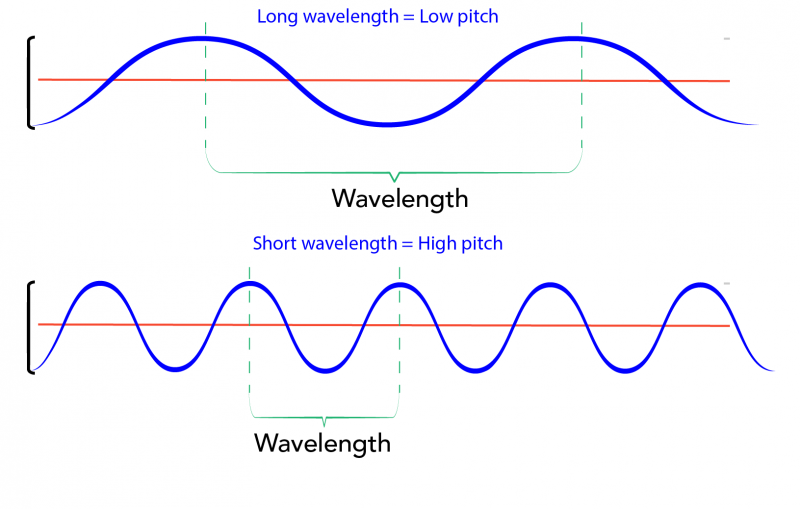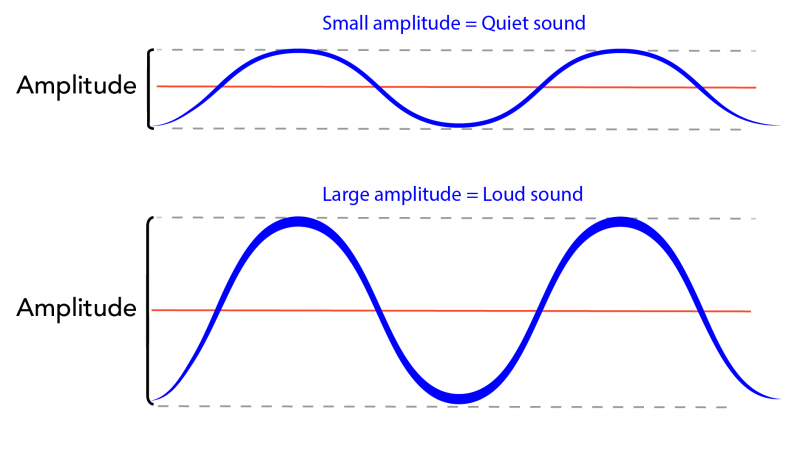How We Hear How We Hear Funny
What is Sound and How do we Hear it?
Sound waves (jop_pop, istockphoto)
Sound waves (jop_pop, istockphoto)
How does this align with my curriculum?
Learn how sound travels in waves and how it is measured in this backgrounder.
When you think about sound, what's the first thing that pops into your head? A song you heard on the radio this morning? Or maybe something less pleasant, like a school bell?
But, have you ever thought about what sound actually is?
Anatomy of the Ear
Before you can understand sound, you have to understand how your ears work. After all, what goes on inside your ears is what allows you to hear.
For example, when a person talks, the movement of their mouth creates waves of moving air. These sound waves travel into your ear canal and hit your eardrum. This causes the ossicles to vibrate. These three small bones are called malleus, the incus and the stapes. They are also known as the hammer, the anvil, and the stirrup.
The vibrating ossicles transmit the sound waves to the cochlea. It's a small, snail-shaped structure inside your head. The cochlea contains small cells called hair cells that convert sound waves into signals. The signals then get sent to your brain. And that is what allows you to hear someone's voice!
What are Sound Waves?
As you just learned, you hear when your ears process sound waves produced by an object. The object produces waves by vibrating. When an object vibrates, it pushes against the surrounding air. The vibrations cause the air to expand (called rarefaction) and compress. This causes areas of high and low pressure as the sound moves towards your ears in the form of waves.
As an example, picture a metal spring, like a Slinky. When you push on one end of the spring, it bunches up. The bunched-up area slowly travels the length of spring until it reaches the other end. This is like the areas of high pressure in sound waves. As the spring continues to move, the bunched-up area will start to stretch out. This is like the areas of low pressure in sound waves. In other words, some areas bunch up and others stretch out as the wave travels from a vibrating object to your ear.
Did you know?
Sound waves travel through the air at a speed of about 1 235 km/h at sea level!
What is Pitch and Frequency?
Wavelength determines a sound's frequency. Wavelength is the distance between waves. For sound waves, wavelength refers to one complete cycle of rarefaction. The shorter the wavelength, the higher the frequency of the sound.
Frequency is measured in Hertz (Hz). One Hertz corresponds to one cycle—in this case, one sound wave—per second.
Frequency determines the pitch of a sound. High-pitched sounds have a high frequency. Low-pitched sounds have a low frequency.
For example, imagine a very deep note - one that would come from a bass guitar or a key at the lower end of a piano. This note has low frequency. That means it's low-pitched.
Now, imagine you hear a very bright note. One that might come from a violin or the higher end of a piano. This high note has a higher frequency. That means it's high-pitched.
Did you know?
Frequencies too low for people to hear (lower than 20 Hz) are called infrasonic. Frequencies too high for us to hear (above 20 000 Hz) are called ultrasonic.
Most humans can hear sounds between 65 Hz and 23 000 Hz. But that doesn't necessarily mean that ultrasonic sounds are comfortable or even safe to listen to!
Did you know?
Most dogs can hear sounds between 65 Hz to 45 000 Hz. Dog whistles have very high frequencies. When you blow one, dogs go crazy, but people can't hear a thing!
What is Loudness?
Amplitude determines the loudness of a sound. Amplitude refers to a sound wave's size, or height.
Volume is directly related to amplitude. Volume refers to a sound wave's intensity.
For example, the harder you pluck a guitar string, the louder the sound it will make. That's because you're transferring more energy to the string and producing larger sound waves. When you pluck a string very lightly, you are transferring much less energy. As a result, you produce much smaller sound waves. The effect is similar to dropping a large rock or a small pebble into the water. The louder sound is like the larger splash!
Remember that song you were listening to the radio this morning? Now you have a better idea of how vibrations from the radio created sound waves. These were captured by your ears, which sent signals to your brain. And the pitch, loudness and volume of the sounds you heard depended on the frequency, amplitude and intensity of the sound waves.
Learn More
The Science of Hearing (2018)
Ted-ED video (5:16 min.) explaining how we hear sounds, and on the mechanics of the ear.
Virtual Oscilloscope
This page from Academo features an interactive virtual oscilloscope - a tool that shows a visual representation of sound waves and how they can be manipulated.
Can "Distracting" Noise Actually Help You Study Better? (2017)
This article by Kaitlin Goodrich for BrainScape compares the ability to study in quiet places vs. places with ambient or "background" noise.
Frequency, Wave Shape and Pitch (2017)
Video (7:05 min.) from Walk That Bass that explains the different components of a sound wave and how a wave can be manipulated to create different sounds.
References
National Centre for Initial Teacher Training in Primary School Science. (n.d.). The speed of sound in air. University of Leicester.
beattielabody1966.blogspot.com
Source: https://letstalkscience.ca/educational-resources/backgrounders/what-sound-and-how-do-we-hear-it




0 Response to "How We Hear How We Hear Funny"
Post a Comment